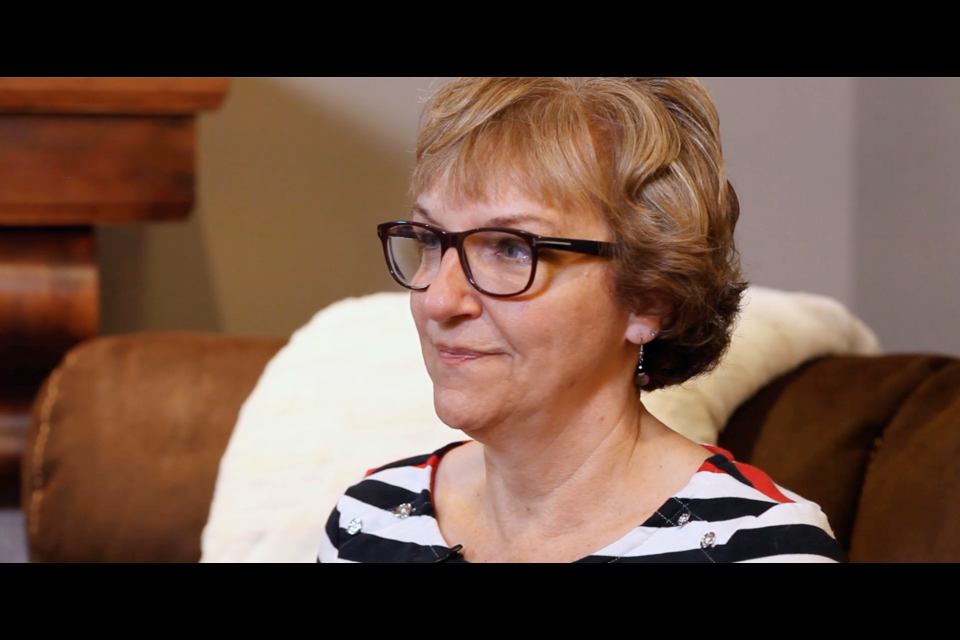Beth Foster felt a hot, searing knife-like pain from the back of her neck to the front of her head.
“As fast as I felt that pain, it was gone, but to this day that feeling burns in my memory,” the 62-year-old Newmarket resident said as she recalls the collision with a garbage truck that changed her life in minutes.
“I was always someone who enjoyed ‘going and doing’, as I describe it, but all that abruptly changed when I was rear-ended while stopped at a red light. At that moment, I didn't know how hard my journey was about to become,” Foster said of the collision that occurred five years ago.
She was diagnosed with a mild-to-moderate traumatic brain injury (mmTBI), soft tissue damage in her shoulder and whiplash.
She had expected a stiff neck the next day, Foster said, and was totally unprepared for the problems walking and balancing, nausea, extreme headaches, leg pain, body aches and more that followed.
“I was totally clueless to the misery I was about to endure,” she said.
She slept all the time, but felt as if she hadn’t slept at all, had blurred vision and wasn’t able to stand the sound of people talking or background noise.
“The best I could do — the only thing I could do — was stay quiet and still,” Foster recalled. “My family doctor did say, ‘This is going to be a long, slow process'."
Life ground to halt for the formerly active and engaged resident who was no longer able to garden, or attend church and the car shows and concerts that she loved.
“Walking and talking with a friend was completely out of the question. I could no longer play with my grandkids and being there for my son and my spouse was much harder to do,” she said.
“I found myself enduring life, not enjoying it. I went from this 'go-er do-er person' to a life locked within the walls of my home.”
"It just devastated, it was so shocking," said friend Patricia Mullen. "It was a Beth I didn't know."
Eventually, she was referred to Dr. Ryan Scott at Advantage 4 Athletes (A4A), a centre in Markham “that had a body and mind approach to rehabilitation” and is an authorized PoNS treatment clinic, Foster said.
She started treatment with the PoNS device and Dr. Scott July 22, 2019, vowing to be in it “for the long haul after five years of misery,” hoping against hope that she would see her condition improve, even minimally.
The treatment features a portable neuromodulation stimulator device, which has been in development for approximately 20 years, and was authorized for use by Health Canada after successful clinical trials in late 2018, according to Dr. Harry Kovelman, vice-president of medical affairs at Helius.
"The device gently stimulates the surface of the tongue, exciting the neural network flowing to the brain. This neural activity is believed to enable neuroplasticity, which may reactivate and change the neural network, compensating for previously lost function," Kovelman said.
Within the first five days of treatment, Foster said she felt tingling at the back of her head, and no longer felt nauseous due to her lack of balance.
“My ability to manoeuvre on the treadmill was so amazing to watch unfold. I went from a one-sided bear walk — I didn’t even realize I walked one-sided — and a very slow pace, to a normal walk and perfect balance,” she said.
"The mental health challenge that goes along with failing to keep your balance and walking properly is extremely tiring," said Scott.
It was hard, exhausting work, but at 14 weeks, she was able to run at a fast pace on the treadmill, without holding on to the bars, and she had regained her balance.
"Within a few days, things were changing," said Scott of Foster's progress. "She was back playing with her granddaughter."
Foster not only found herself again, she felt like a new person as she reconnected with the life she had lost.
“I could play with my grandchildren again. I went to a concert with my husband and son, which was a very emotional day for me,” Foster explained.
“I can be there for my friends and family again. I’m going out to restaurants again. I am gardening and driving again. One of my biggest accomplishments was being able to travel — even getting on a plane.”
"She's back," said her husband, David Foster.
A4A was the first authorized clinic in Ontario to offer the treatment to mmTBI patients in 2019.
The device is intended for use as a short-term treatment, 14 weeks, of chronic balance deficit due to mild-to-moderate traumatic brain injury and is to be used in conjunction with physical therapy, Kovelman said.
PoNS treatment, which currently costs between $10,000 to $15,000 for 14 weeks depending on the clinic and patients' needs, is not covered by OHIP, however, some patients have received private insurance coverage, according to Emma Grenon, director of business development at Helius Medical Technologies.
In Canada, about every three minutes, a person suffers from an acquired brain injury, according to Brain Injury Canada. Almost 165,000 serious brain injuries occur every year, which doesn't include concussions, military injuries or unreported cases.
An acquired brain injury, which is defined as damage to the brain after birth, can affect every aspect of a person’s life. The statistics are staggering:
- Approximately 1.5 million Canadians live with the effects of an acquired brain injury
- Annual incidences of acquired brain injuries in Canada are: 30 times more common than breast cancer; 44 times more common than spinal cord injuries; and 400 times more common than HIV/AIDS.
You can watch a video of Beth Foster’s journey to recovery here.



